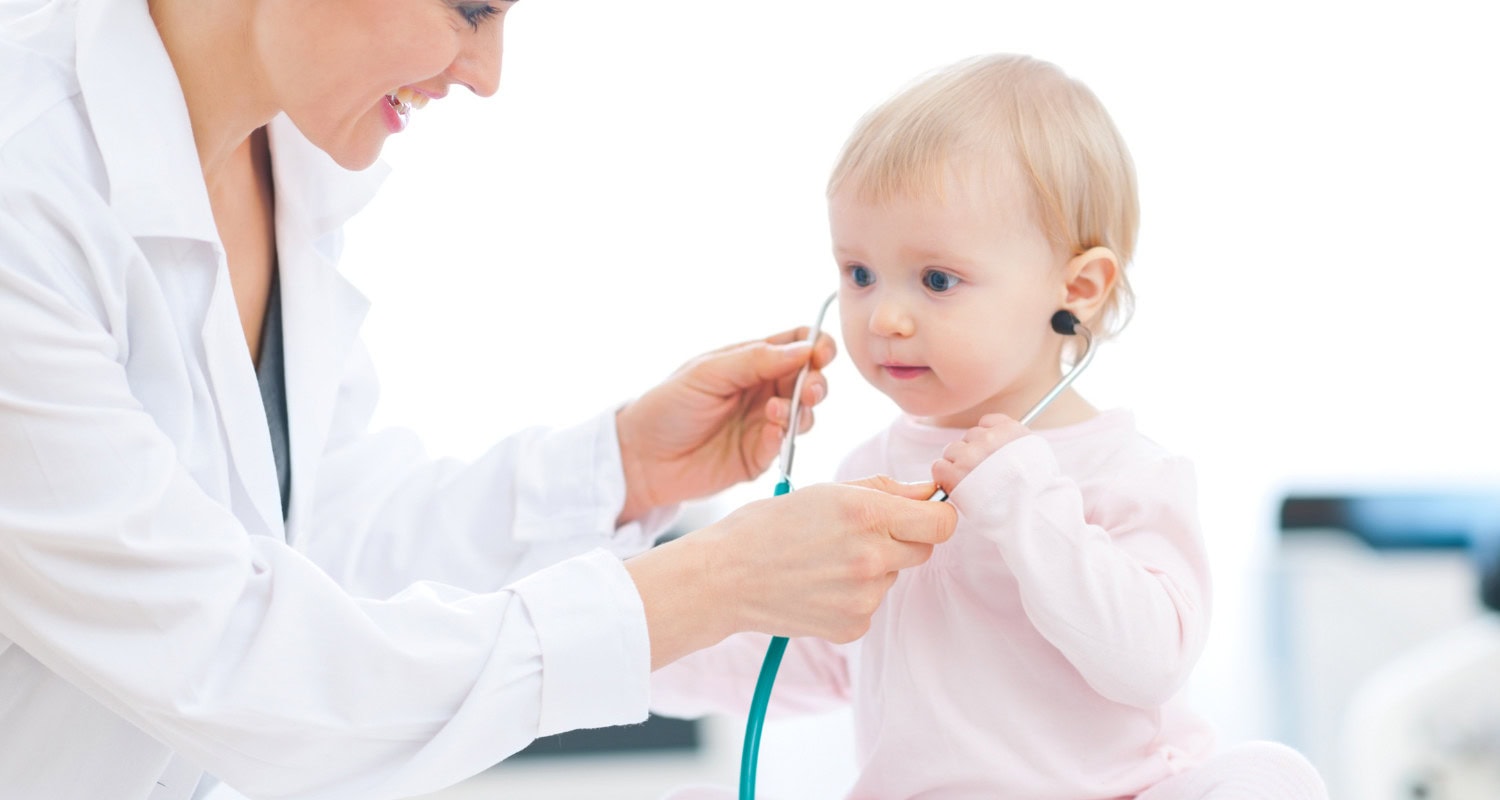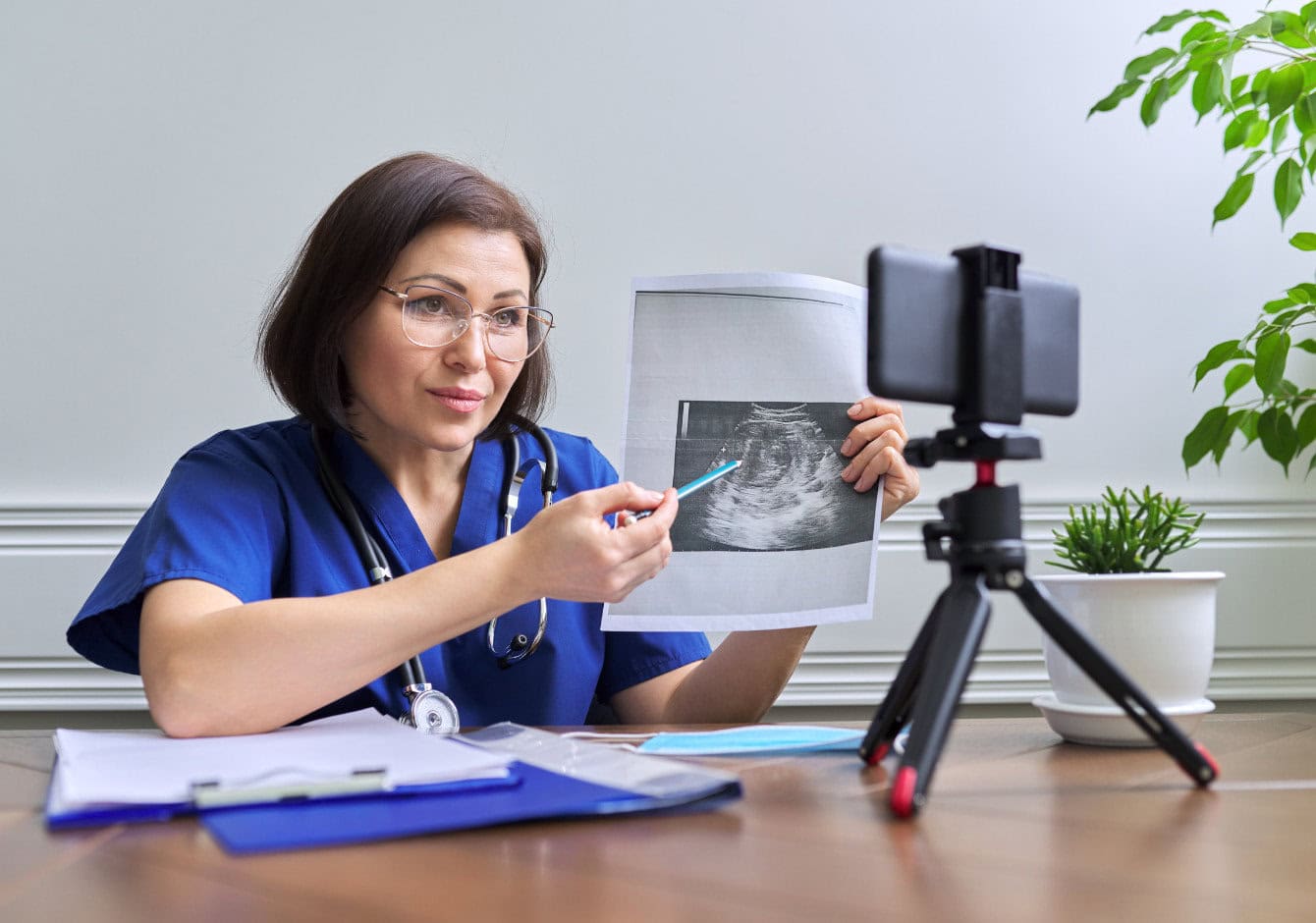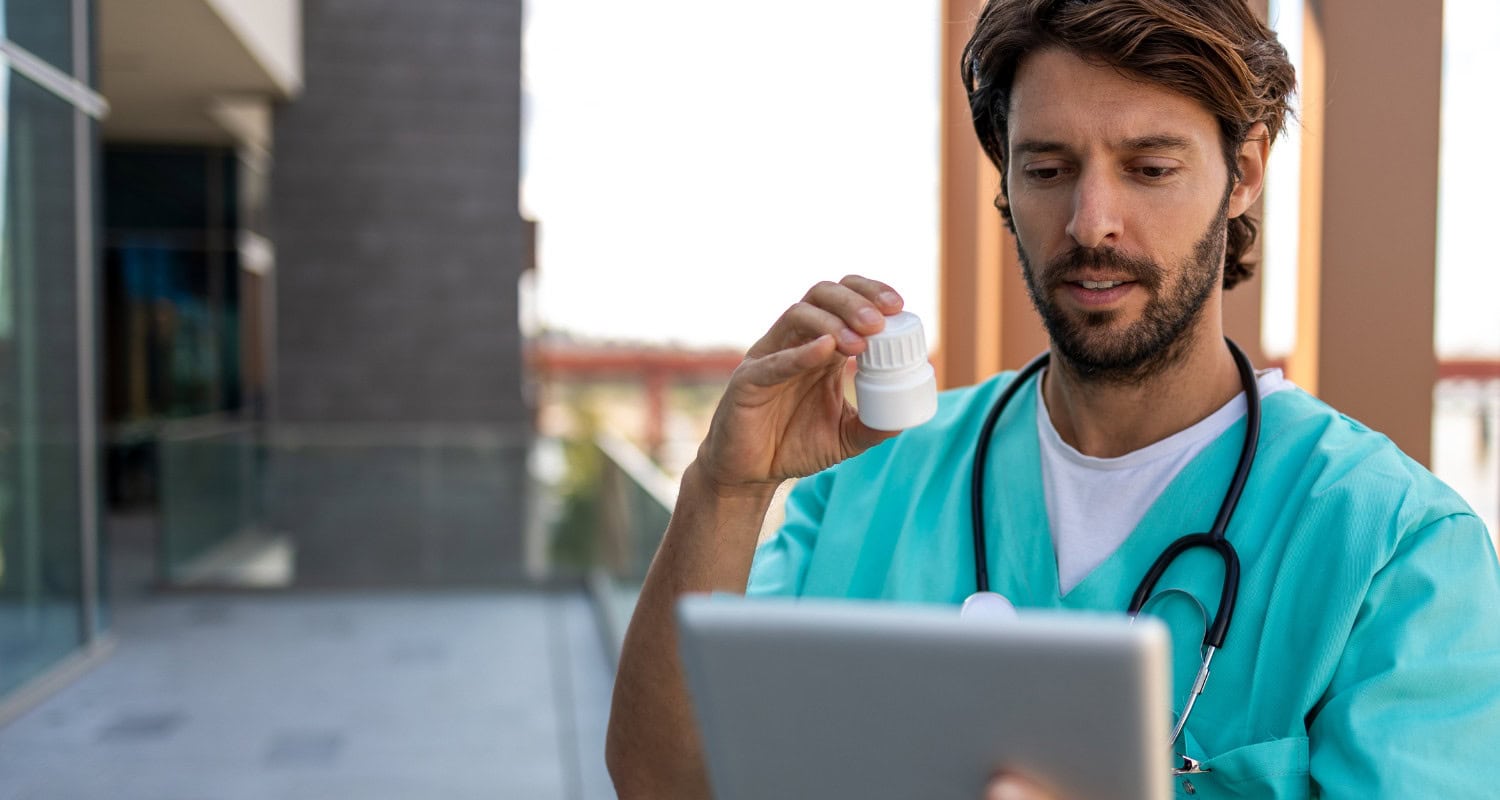RPM transforms healthcare by allowing providers to track patient health data in real time using devices outside traditional clinical settings. Remote monitoring devices collect and transmit patients’ data like cardiac rhythm or glucose levels, enabling continuous monitoring and timely interventions. It enhances patient care, reduces hospital readmissions, and improves chronic disease management, all while offering patients convenience and peace of mind.
In this guide, we will explore the operational specifics of RPM, delve into the current market landscape, and provide real-world examples of successful RPM implementations across healthcare settings. Whether you’re a healthcare professional or an industry enthusiast, this overview will provide valuable insights into what is RPM in healthcare.
What is Remote Patient Monitoring?
Remote patient monitoring (RPM) is the approach to health care delivery based on collecting real-time patient health data and transferring it to the medical care team. RPM software for medical devices enables healthcare providers to gather information outside standard hospital settings with wired or wireless peripheral measurement devices.
For instance, a continuous glucose monitor (CGM) tracks blood sugar levels in diabetic patients and transmits the data to healthcare providers. Another example is a blood pressure monitor patients can use at home, sending readings directly to their doctors to manage hypertension more effectively. One of the most progressive solutions in healthcare is remote health monitoring using ppg (photophelysmogram). These devices allow healthcare professionals to detect irregular data values, such as heart rate, blood pressure, oxygen saturation, and symptom scores, in the fastest and the most precise way.
Along with other telehealth solutions, RPM has already proved its great value and multiple benefits for patients and healthcare entrepreneurs, ranging from increased revenue for outpatient services to improved healthcare quality. Patients benefit from more consistent monitoring and early detection of potential health issues, which can lead to better management of chronic conditions. At the same time, remote health monitoring devices help providers optimize resources, reduce hospital readmissions, and improve patient engagement, ultimately leading to higher patient satisfaction and better health outcomes.
Learn more about our Chronic Disease Management Software Development Services
How Does Remote Patient Monitoring Work?
RPM relies on medical monitoring devices to collect health data remotely and generate real-time insights for patients and clinicians. Users can check the data on supplementary mobile and web applications to evaluate the current state of health and make better-informed choices.
RPM systems are composed of several key components that work together to ensure efficient healthcare delivery, including:
- a personal medical device (e.g., implanted sensors, oximeters, blood pressure monitors, wearables like an Apple Watch, etc.);
- mobile app for patients compliant with IEC 62304 and HIPAA safety standards;
- a cloud database that сaptures raw health data from the mobile app;
- RPM software that receives data from the repository, forms reports, identifies warning signs, and sends notifications to a healthcare team that makes decisions regarding treatment.
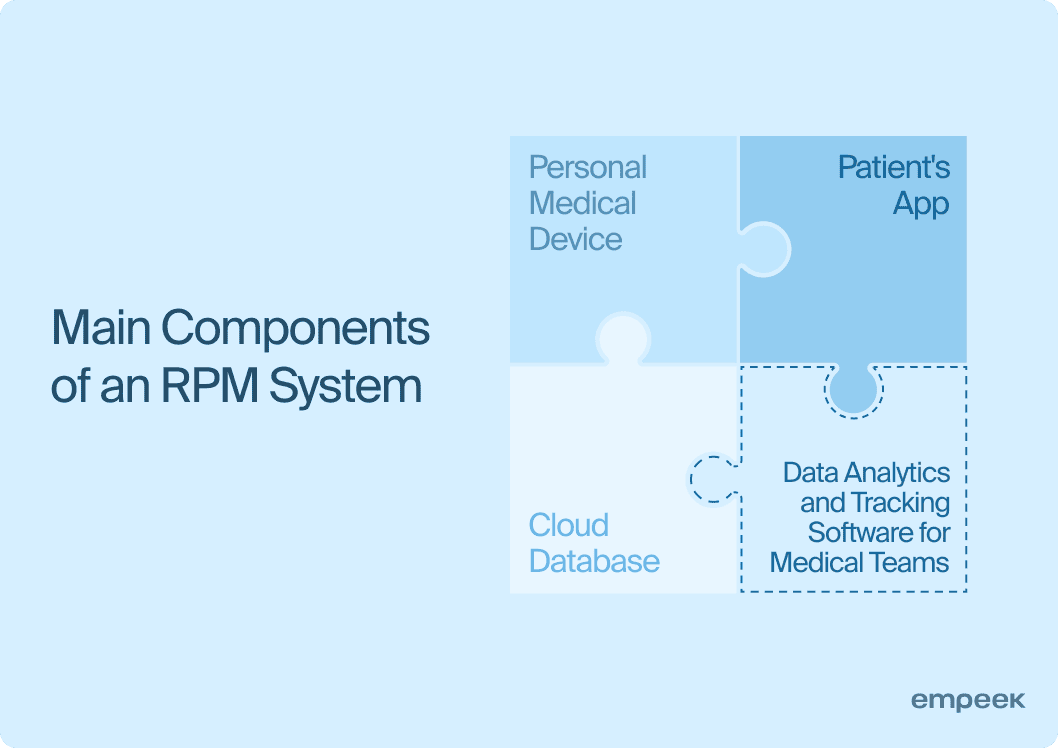
Besides using the basic RPM functionality, healthcare organizations can enhance patient care, improve health outcomes, and increase operational efficiency by integrating RPM with other telehealth solutions like online video conferencing. Telehealth consultations allow healthcare providers to consult patients and intervene early if any irregularities are detected. This integration reduces the need for in-person visits, freeing up healthcare resources and allowing providers to manage a larger patient population more effectively. It also minimizes hospital readmissions by providing continuous care and monitoring.
Your next read: 6 Benefits of Telehealth Video Conferencing for Patient Monitoring
Remote Patient Monitoring Workflow
RPM facilitates real-time health data collection, transmission, analysis, and intervention, enabling healthcare providers to manage patient health proactively and efficiently. Here is how the RPM system works:
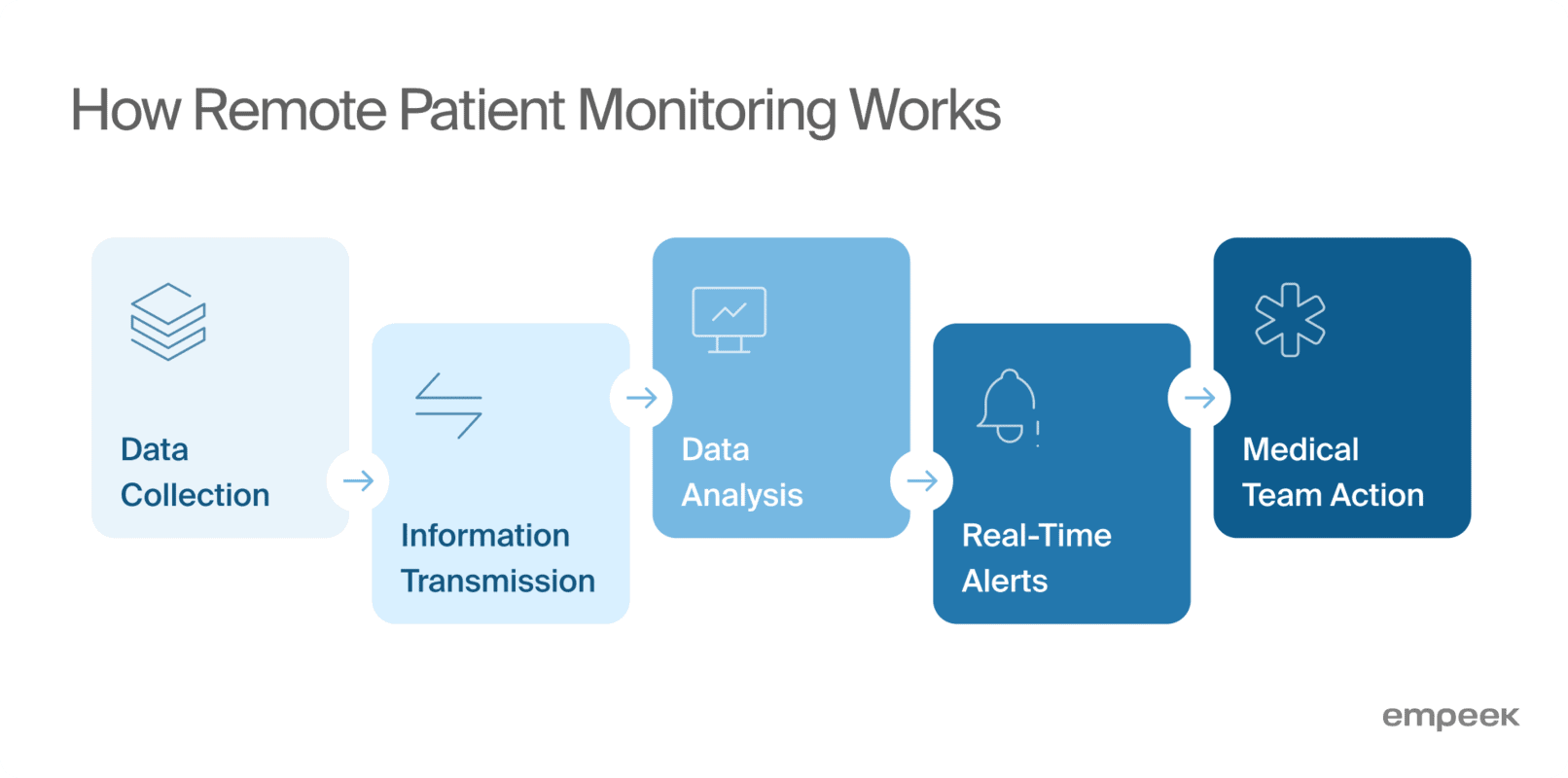
| Stage 1. Data collection | Upon software activation, the RPM-supported device starts gathering data and puts it into internal systems. Stored information gets structured and formatted for further transmission to the physician. |
| Stage 2. Information transmission | The transmission can happen in different ways, such as via the internet or secure messaging systems, ensuring timely delivery of critical health information for further analysis and intervention. To safeguard patient data, robust security measures, including encryption and secure authentication protocols, are essential to protect against unauthorized access and breaches. |
| Stage 3. Analysis | At this stage, internal software processes and evaluates delivered data using algorithms. The generated insights help the healthcare team examine the information quickly and identify early warning signs of deteriorating patient condition. |
| Stage 4. Real-Time Notifications | If a physician reveals any deviations in the data that require prompt actions, the system sends alerts directly to an emergency medical team. |
| Stage 5. Action | In case of emergency, doctors deliver immediate assistance to the patient. Apart from helping an individual right away, the medical services team will explain what caused the incident and how to prevent it in the future. |
Current State of Remote Monitoring in Healthcare: Market Growth & Trends
Telehealth has emerged as a vital and valuable model of care delivery, with remote patient monitoring (RPM) standing out as one of the most effective forms of virtual care. While RPM is not a new concept—it has been around since the 1960s—it has significantly evolved and gained acceptance among practitioners, patients, payers, and the federal government. During the COVID-19 pandemic, RPM proved invaluable in providing continuous patient care, managing chronic diseases remotely, and generating favorable reimbursement and consistent revenue for healthcare providers during the limited operation of offline facilities.
The latest market report shows that the RPM market is significantly influenced by several key trends:
- North America leads the market due to its large geriatric population and high RPM adoption, followed by rapid growth in the Asia-Pacific region driven by increased healthcare investments and digital health solutions.
- The global rise in the geriatric population is driving demand for RPM solutions, as older adults are more prone to chronic diseases like diabetes and cardiovascular conditions. In the EU, 37% of individuals aged 65 and over report having multiple chronic diseases, with higher rates among women.
- Escalating healthcare costs are a major concern for healthcare systems worldwide. Chronic conditions account for 90% of US healthcare expenditures, with heart diseases alone costing $216 billion annually. RPM can mitigate these costs by reducing emergency visits and hospitalizations through early intervention, efficient management of health data, and remote care options.
- Advancements in technology are boosting RPM adoption. Innovations in wearable devices and medical sensors enable efficient monitoring of various health metrics, with the wearable medical devices market growing at 19.2% annually and expected to reach $143.2 billion by 2032.
Besides the listed trends, market segmentation insights show that heart rate monitors dominate the device type category, while cardiovascular disease management leads in applications. RPM is also extensively used in hospitals and clinics for its ability to extend care beyond traditional settings, optimizing resource use and patient management.
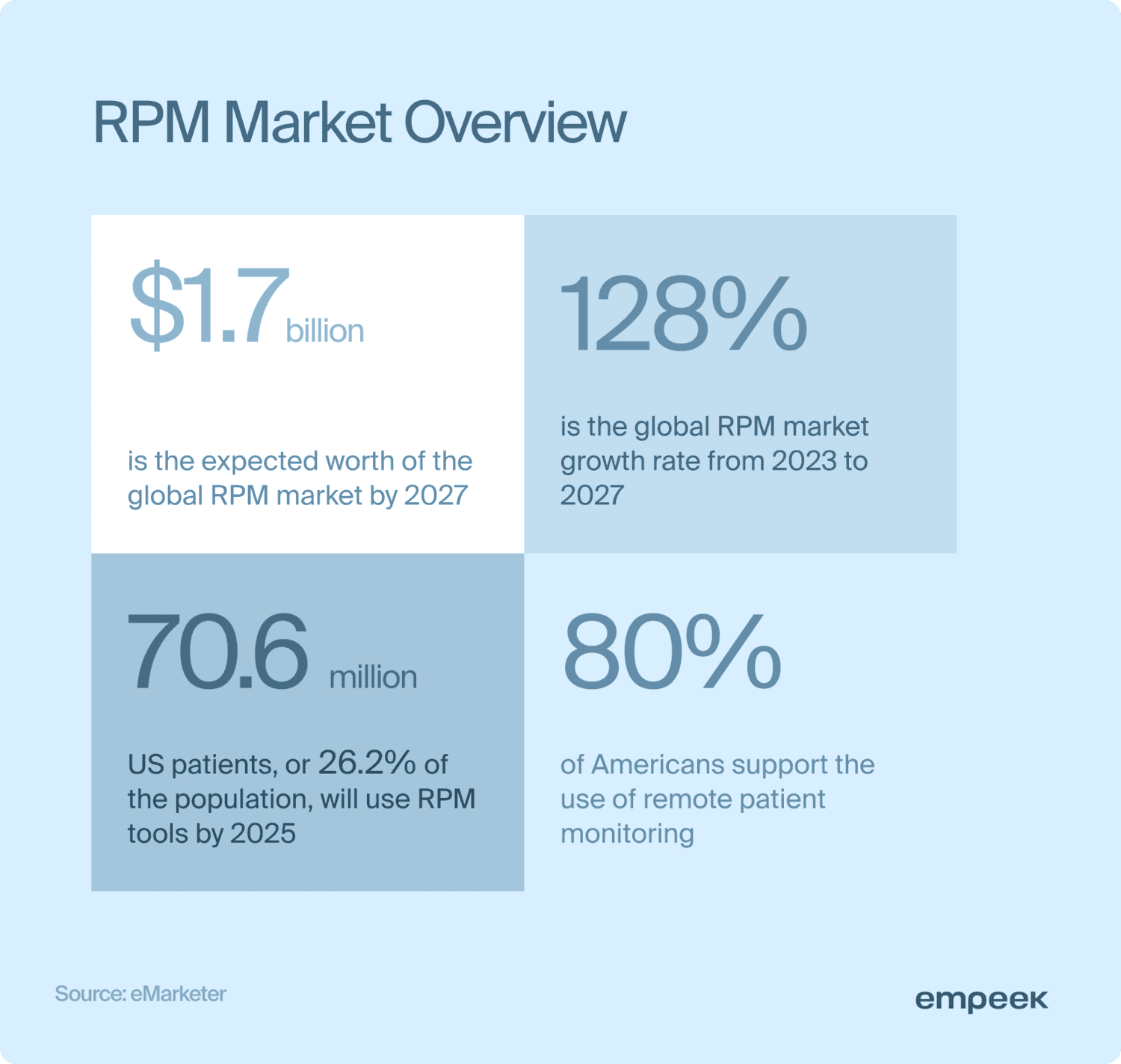
Read also 5 Telehealth Trends to Follow in Your Healthcare Facility
Benefits of Remote Healthcare Monitoring Software
With the rising popularity of telehealth solutions, RPM technology has attracted interest from many researchers. A recent study has revealed that patients who engaged in RPM were less likely to return to the emergency department within 90 days and experienced a 16.2% lower chance of needing emergency department visits over the following year. This reduction in emergency visits highlights several benefits of using RPM, including improved chronic disease management, timely interventions for health issues, and enhanced patient engagement. RPM also helps reduce healthcare costs by minimizing hospital readmissions and ensuring remote continuous monitoring. Moreover, telemonitoring technology provides countless opportunities for businesses and enables them to get a significant competitive advantage. Let’s consider some of the major benefits of RPM implementation below.

Improved Accessibility and Quality of Care
One of the main areas of improvement in the healthcare system resulting from RPM implementation is the accessibility of medical care for individuals with chronic diseases. The statistics show that about one in four Americans has multiple chronic conditions that need consistent monitoring, which is challenging to do in traditional hospital settings. Remote patient monitoring can help physicians out. Apps, telehealth, and IoT solutions in healthcare allow connecting with people and tracking their health remotely.
RPM software allows doctors to:
- extend patient care beyond traditional clinical settings;
- keep an eye on the patient’s condition remotely thanks to real-time monitoring systems;
- give patients better, evidence-based treatment advice;
- notice alarming trends and take corresponding actions immediately.
All these practices can reduce health risks and complications of chronic diseases among patients and increase the quality of care.
Increased Revenue
One of the major reasons why healthcare organizations have a low profit is considerable ongoing expenses. Companies invest heavily in developing their facilities and employing skilled labor. Hence, their income is spent largely on business maintenance.
RPM system adoption lowers organizational costs by allowing healthcare providers and insurers to process large amounts of health data using fewer human resources and equipment.
In addition, 99457 and 99458 CPT codes regulating treatment management allow healthcare providers not to pay separate hospital facility fees, which also reduces the total amount of business expenses. These codes cover remote patient monitoring services, including data collection, interpretation, and patient communication, for a minimum of 20 minutes per month for CPT 99457 and an additional 20 minutes for CPT 99458. Consequently, integrating remote healthcare monitoring software into physician workflows leads to higher revenue streams by enabling billing for these patient remote monitoring healthcare activities, thus compensating providers for their time and expertise without incurring additional facility costs.
Reduced Overload in Hospitals
RPM helps healthcare providers reduce the workload of hospital and ER staff. Since a remote medical monitoring system allows patients to get care without visiting a doctor’s office, the risks that the healthcare system will face shortages of facilities are lower. RPM also frees hospital staff from constantly doing wellness checks so they can focus on critical cases instead of being tied up with routine tasks.
Remote patient monitoring is almost a universal monitoring method that helps track a range of common health conditions, including mental health issues, hypertension, cancer, and other cases.
Streamlined Medical Practice Workflows
Inefficient routine operations and communication with patients cause additional challenges in complex healthcare workflows. People often delay or cancel their appointments due to time-consuming commuting or private problems. Unpredictable issues associated with logistics and personal circumstances may disrupt clinical workflows.
RPM minimizes such problems, especially when combined with a CRM for healthcare providers. Since patients can report information about their health condition from anywhere and anytime, doctors are less affected by external factors in their routine operations. Hence, they can better organize their workflows and perform duties more efficiently.
Enhanced Patient-centered Care
Patient-centered care means that individuals are regularly informed about their condition and actively involved in treatment so doctors can respond to their needs and wishes effectively and provide constant support.
Nowadays, the pressure on health services is so extreme that patient-centered care may not be feasible due to the lack of time needed to gather data and to agree on management procedures.
With the help of remote patient monitoring technologies, patients can follow a personalized treatment plan and undergo regular check-ups while staying home. Biosensors, pulse oximetry, blood pressure cuffs, implantables, glucometers, and other RPM tools allow physicians to collect and update patient-generated health data almost instantly, provide prompt feedback, and take appropriate actions. This significantly improves the patient experience and helps healthcare businesses increase consumer satisfaction.
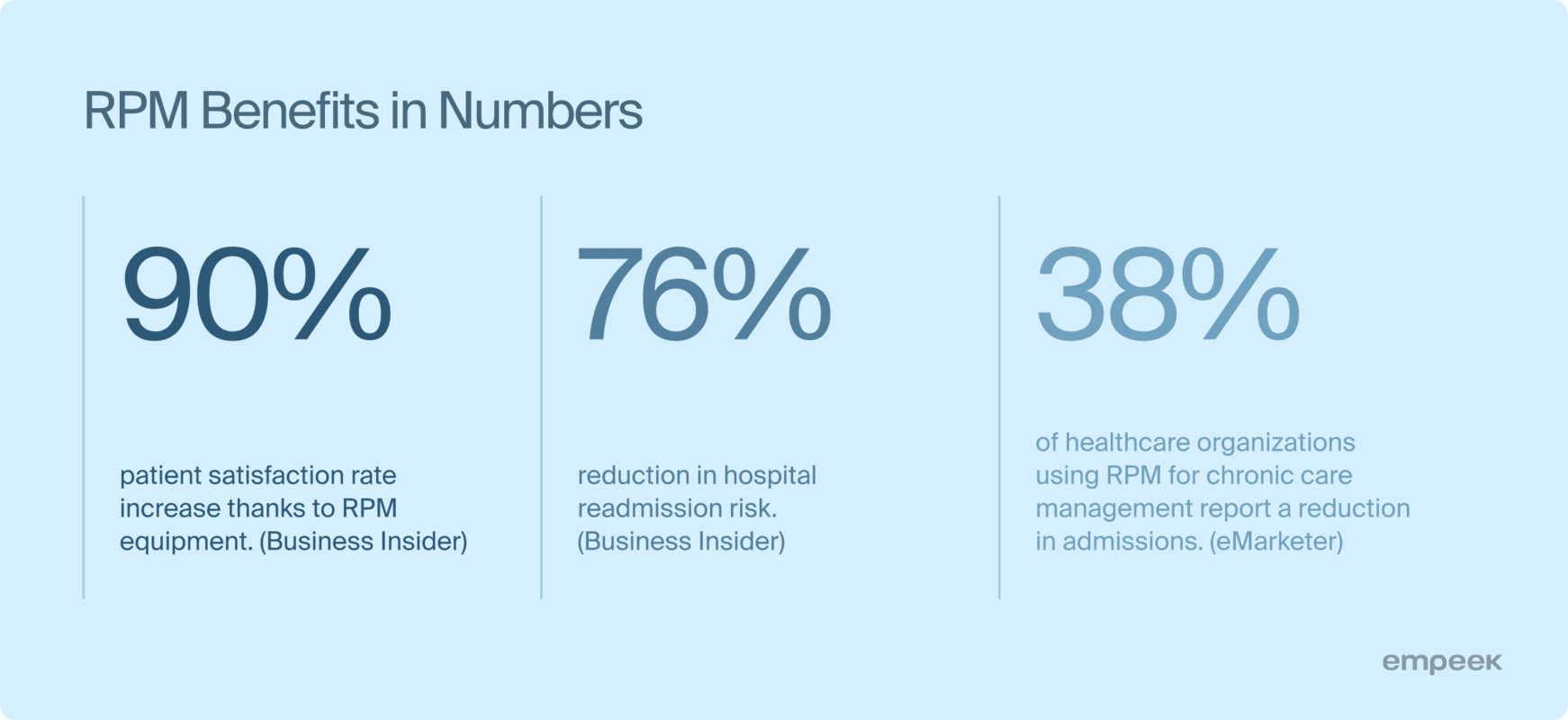
How to Implement a Remote Medical Monitoring System
The adoption of RPMS is a multi-stage process with many pitfalls. To help you avoid potential difficulties during RPM implementation, we are sharing some recommendations below based on our experience with remote patient monitoring systems. These steps should help you succeed in RPM technology deployment and make it more organized.
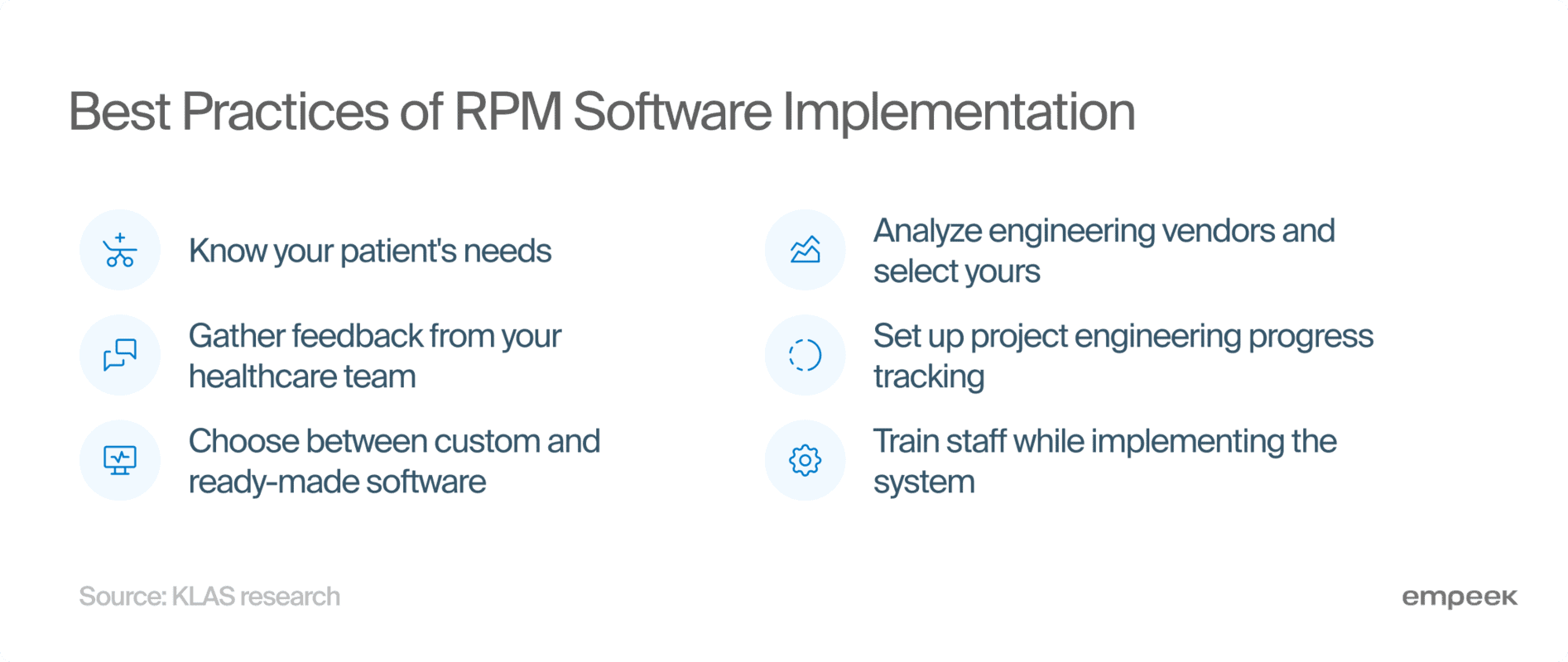
Identify Patient Needs
We all know that people with different diseases have different needs, which means different ways of remote clinical monitoring are suitable for them. For example, high-risk patients require more frequent monitoring services than mild-moderate patients, while those with diabetes or cardiovascular diseases should use remote patient monitoring devices that support continuous communication. Separating individuals with different medical conditions can make patient care more consistent and efficient.

Keep an Open Dialogue With a Healthcare Team
Gathering opinions of both business executives and staff members about the key operational pain points is crucial to choosing the RPM software that can solve real problems and bring tangible benefits to your remote patient monitoring business model. Detailed and honest feedback can help you focus on what truly matters to the end-users.
Choose Between Custom Development and Ready-made Software
Although integrating a ready-made RPM solution may take less time, custom remote patient monitoring software development has major benefits that can make a difference to your business. Tailoring software to your specific business needs means you can create a fully custom feature set for your RPM system. It also allows you to scale the system easily in the future or as your healthcare organization grows and changes.
Even though ready-made RPM solutions might seem cheaper than customized products, they may cost you more in the long run. Custom RPM software development provides considerable efficiency and productivity gains that pay initial expenses off.
Select Your RPM System Development Vendor Carefully
Once you decide to opt for custom development, pay special attention to software development vendor selection. Do a thorough research and hire a reliable vendor that can create a secure, well-suited tool for your business. Checking up customer referrals on independent review platforms like Clutch.Co, Goodfirms, or G2 may be helpful at this point. Our recent article highlights some key aspects to consider when choosing an EHR software development vendor, but the same principles work for RPM software development companies.
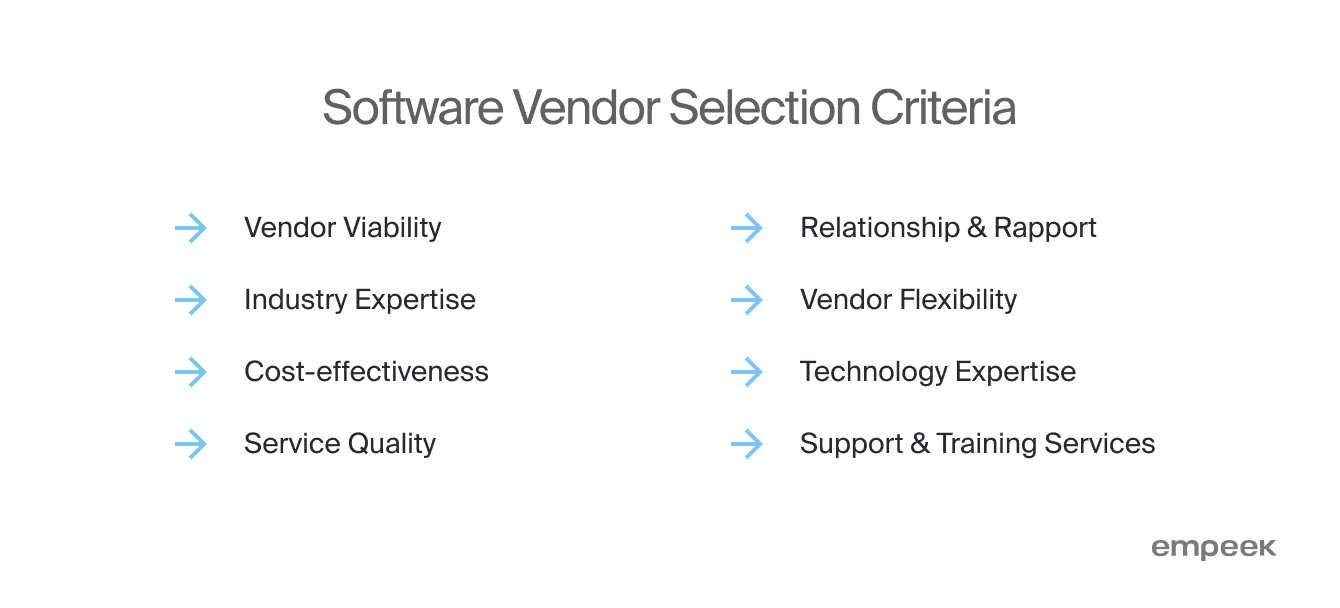
Track Project Progress
The best way to get a high-quality final product is to keep an eye on the RPM software development process and cooperate with a vendor that provides you with a clear roadmap. Set milestones for particular development stages and maintain consistent communication with your vendor. Most development teams, including Empeek, use agile methodology, which allows you to get feedback and deliverables after completing each development cycle.
Also, evaluate interim results well and make data-driven decisions based on them. This will help you and project team members make timely changes to the system and ensure it meets all your requirements.
Install a Software System and Train Staff
Deploying a real-time health monitoring system may take up to a few months. While the system is being developed, it’s high time to start preparing its future users for the upcoming change. The best approach is to demonstrate how the system will be used and prove its multiple benefits.
Only by making sure that your medical team realizes the role and benefits of new software in the care process, quick and effortless user adoption can be achieved.
Using RPM technologies can be a novel experience for some individuals. Therefore, you should adopt a highly structured, personal approach while giving user instructions. To ease this process, you can turn for support to your vendor. As development companies regularly help their customers with an RPM program implementation, it would be better to rely on their expertise.
Examples of Remote Patient Monitoring Solutions
For successful implementation, it is crucial to study the experiences of others and learn from existing solutions. Let’s explore several real-world remote patient monitoring use cases in healthcare settings, demonstrating its impact on patient outcomes and operational efficiency.
Ambulatory and Post-Hospital Care by Mayo Clinic
Mayo Clinic’s RPM program uses RPM devices to track vital signs such as heart rate, blood pressure, and oxygen saturation. Upon discharge, patients get these devices to monitor their health status continuously at home. Devices transmit the collected data to the Mayo Clinic’s healthcare team, who can quickly identify any anomalies and intervene as needed. This enhances patient care and reduces the likelihood of hospital readmissions, as doctors can address early signs of potential complications promptly.
In addition to monitoring vital signs, the Mayo Clinic’s RPM program includes patient education and engagement functionality. Patients receive regular updates and feedback on their health status, empowering them to take an active role in their care. The program has demonstrated significant benefits, including reduced emergency department visits and improved patient satisfaction. This is a great example of how integrating RPM into post-hospital care can lead to better health outcomes and more efficient use of healthcare resources.
Cardiac Monitoring Devices
The US cardiac telemetry company has launched a remote cardiac monitoring system using Empeek’s engineering help to provide patients with 24/7 cardiac health monitoring. Patients use a compact, mobile ECG device from home with a patient diary feature to note daily activities. An intelligent algorithm automatically filters and categorizes data, emphasizing high-risk abnormalities and alerting technicians to urgent cases. The system sends real-time data to cardiac experts, who check it for abnormalities and report critical issues to doctors for timely help.

COPD Management in Rural Areas
In a rural healthcare setting, an RPM program was implemented to manage patients with chronic obstructive pulmonary disease (COPD). Patients received spirometers and pulse oximeters to monitor their lung function and oxygen levels. The data collected was transmitted to a centralized healthcare team, which could then provide timely interventions and support. This program significantly reduced the number of hospital admissions for COPD exacerbations, demonstrating the effectiveness of RPM in managing chronic conditions in underserved areas. It also enhanced patients’ quality of life by allowing them to receive continuous care without traveling long distances to healthcare facilities.
Chronic Disease Management at Mount Sinai
Mount Sinai Health System has adopted RPM to manage chronic diseases such as diabetes and hypertension. By equipping patients with devices that monitor blood glucose levels and blood pressure, healthcare providers at Mount Sinai can track patients’ conditions remotely. The data collected helps make informed decisions about treatment adjustments and lifestyle recommendations. This approach improved disease management, reduced hospital visits, and enhanced patient satisfaction. The continuous feedback loop between patients and providers ensures that potential issues are addressed promptly, preventing complications and improving overall health outcomes.
Diabetes Monitoring in Urban Populations
An urban health system implemented an RPM program focused on diabetes management. Patients were given continuous glucose monitors (CGMs) to track their blood sugar levels in real time. Healthcare providers analyzed the collected data to identify patterns and trends for developing personalized treatment plans and dietary recommendations. This approach resulted in better glycemic control, fewer episodes of hyperglycemia and hypoglycemia, and improved overall diabetes management. The program also fostered greater patient engagement and adherence to treatment plans, highlighting the potential of RPM to enhance chronic disease management in diverse populations.
Remote Patient Monitoring Cost
The cost of RPM can vary based on several factors, including the type of devices used, the complexity of the monitoring software, and the level of integration with existing healthcare systems. Remote patient monitoring pricing for basic solutions, like simple devices for tracking vital signs, can start at a few hundred dollars per patient annually. The cost of remote patient monitoring advanced systems that include continuous monitoring devices, sophisticated data analytics, and comprehensive patient support services ranges from $1,000 to $3,000 per patient annually. Additionally, the price of devices, expenses for software maintenance, costs for data storage and security, and the training required for healthcare providers add up.
A detailed cost assessment before the project starts is essential for an organization looking to implement RPM. Contact Empeek to get a precise evaluation and tailor-made proposal for integrating RPM into your healthcare practice.
Final Thoughts
RPM has proven to be a powerful tool during the pandemic and beyond. Using software applications for remote patient monitoring helps organizations cut business costs, reduce hospital admissions, enhance the efficiency of medical services, and improve customer satisfaction. All these benefits prove that remote patient monitoring telehealth solutions bring tangible business benefits, especially when RMP software is tailored to the organization’s internal processes.
If you want an effective customized RPM solution, Empeek can create software that will considerably enhance the quality and cost-efficiency of care at your facility.

